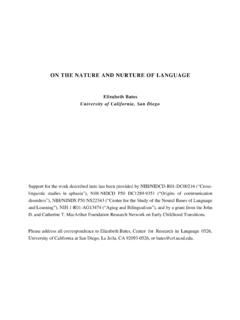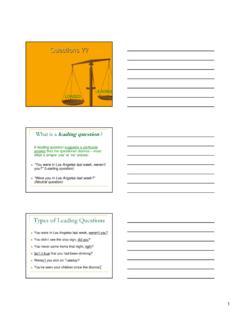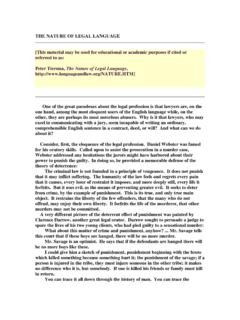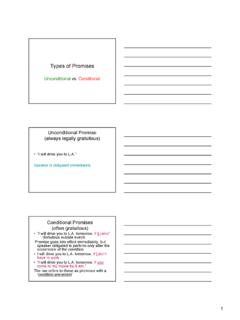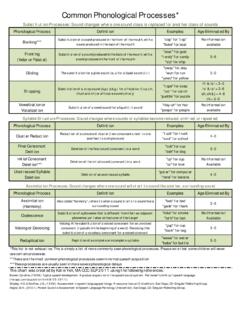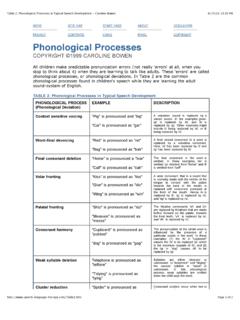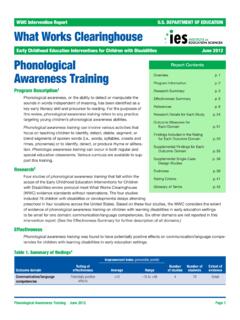Transcription of Introduction to Morphology
1 Introduction to MorphologyFarrell Ackerman APM Hours: W or by appointmentHenry Hours: TBA Requirements The final grade will be based on: 7 homework assignments (70%), including attendance in sections where homeworks will be gone over. A take-home final exam (30%) Though it is permitted, even encouraged, to collaborate with others only on the homework assignments, all work must be your own. If you work with others, it is expected that you will list their names in a footnote at the bottom of the 1st page of your assignment and final.
2 This is to acknowledge their input and to permit comparison of their work with your s. Plagiarism is not permitted and University guidelines will be enforced. A important point of the course is to learn how to solve problems, so you miss the point, if you cheat. Goals of the course Introduce the basic methods for analyzing words. Identify the patterns of word shapes and their strategies of formation found cross-linguistically. Develop a typology of these patterns. Develop theories that can account for these patterns.
3 Get insights into the human mind by examining the patterns of Morphology , why they might be like they are, how they are learned, comprehended and produced, and change over time. Syllabus(Chapters from G. Booij The Grammar of Words)Week 1 2 Introduction , basic conceptsChapters 1, 2 & 12 Week 3-4 Derivation & CompoundingChapters 3 & 4 Week 5-6 Inflection & ParadigmsChapters 5 & 6 Week 7-8 InterfacesChapters 7, 8 & 9 Week 9 Morphology & PsycholinguisticsChapter 10 Week 10 Morphology & PsycholinguisticsChapter 11 What is Morphology ?
4 (image from Carroll et. al. 2005:12) Morphology is the study of form: Biology But, form in biology is also associated with function The payoff(image from Carroll et. al. 2005:25) Cross species comparison of body design in conjunction with results in molecular genetics and developmental biology are providing new understanding of constraints and variability in living creatures. This is made possible by good description of variety and similarity, formal tools of analysis, and the development of theories in which to formulate is linguistic Morphology ?
5 Morphology is where all linguistic dimensions come together: Morphology is at the conceptual centre of linguistics. This is not because it is the dominant subdiscipline, but because Morphology is the study of word structure, and words are at the interface between phonology, syntax and semantics. (Spencer and Zwicky 1998:1)What is Linguistic Morphology ? Morphology is the study of the systematic patterns exhibited between forms and meanings of words in natural language August Schleicher, 1859 Hungarian: ll `stand fel- ll `stand up fel- ll- t `set something up fel- ll- t- s `installation Morphology Morphology is the study of the systematic covariation in the form and meaning of words.
6 Not: ..the study of the combination of morphemes to form words Not: ..the study of the internal structure of words A conflict in perspectivesMorphology is the study of morphemes and their arrangements in forming words. (Nida 1949:1) Morphology .. is simply a term for that branch of linguistics which is concerned with the forms of words in different uses and constructions. (Matthews 1991:3)Fundamental questions What are morphemes and what motivates the hypothesis that they exist? What patterns do word exhibit in `different uses and constructions?
7 What sorts of theories have been developed to account for these patterns? To what degree do theories reflect typological and methodological biases? Are there morphological universals? If so, how might they arise? If not, what explains tendencies for languages to display similarities? Morphology Ferdinand de Saussure (1916) Human language is a system of signs The sign is a relation between form and meaning This relationship is arbitrary The key insight behind Morphology is that complex signs aren t completely arbitrary Words with similar forms tend to have similar meaningsMorphemes as signs Many words are simple, but sometimes they are complex and composed of identifiable smaller pieces.
8 Farmer is a complex word farm+er, because farmer is part of the systematic set: work worker eat eater drive driver farm farmer where -er is a morpheme, a sign, that means one who Vs A words like dormer (a structure that projects out of a house with sloping roof) and sliver aren t complex, because they aren t parts of a set of related words. How about lovelier, sprinkler, and messenger? work is an arbitrary sign (Armenian yerk-el does just as good a job) and -er is an arbitrary sign (Armenian i in yerki does just as good a job).
9 But, words like work-er are motivated, since there is a productive operation which makes every V-er combination predictable in meaning. The allure of reductionism Entities at higher levels of analysis are simply and exhaustively decomposed into entities at lower levels, until we reach the features associated with phonological as units of information(Haspelmath 2002:62) Bulgarian verbal Morphology (From Stump 2001:37)Feature: grammatical attribute such as PERSON,NUMBER, : a specification of an attribute such as 2ND, SINGULAR, : a feature-value pairing such as 2ND PERSON, PAST bundle.
10 A set of grammatical properties such as {2ND PERSON; PAST TENSE; PASSIVE VOICE}Bulgarian verbal Morphology (From Stump 2001:39) The inflected wordforms of 4 LEXEMES. LEXEME: The abstract element common among related elements. Morphosyntactic/Grammatical word: The meaning associated with the lexeme (lexical) and the morphosyntactic properties (grammatical). Wordform: The formal realization or exponence of the grammatical & Paradigmatic(image from Stump 2001:39) Syntagmatic: The linear arrangement of elements (morphotactics) Paradigm: The set of wordforms sharing the same lexeme; The abstracted schema for wordforms sharing the same lexeme; the selection of one wordform excludes the selection of another wordform for the relevant property set.
